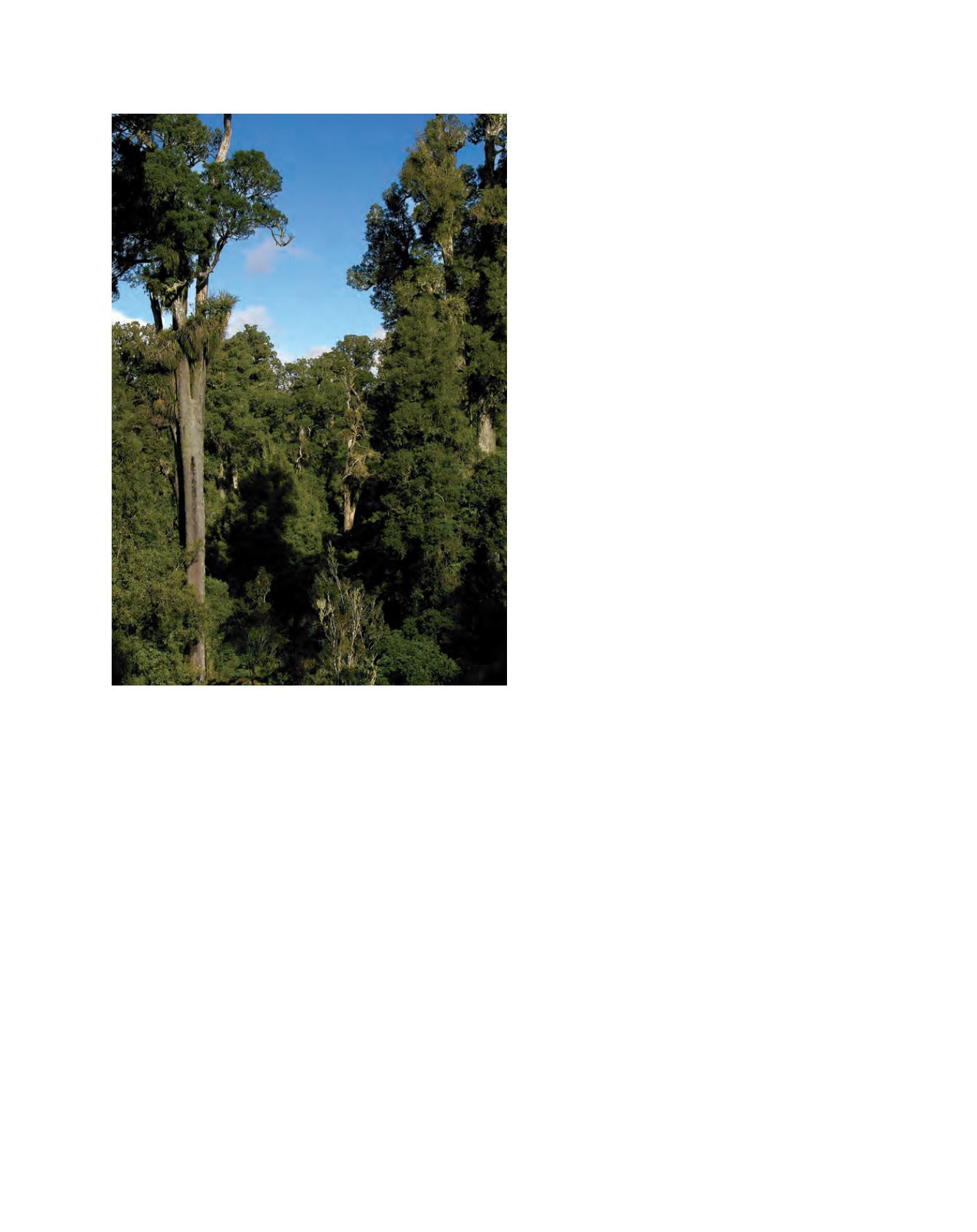

[
] 149
Environmental services provided by forests
Biodiversity
– New Zealand’s indigenous forests are the location
and habitat of many unique and, in some cases, endangered plant
and animal species. The country’s long isolation from other land
masses enabled the unique and endemic biodiversity to evolve
largely in the absence of introduced species. The modern extent
of indigenous forests is a fraction of the historical cover and there
has been significant species loss from the impact of pest and weed
species introduced to New Zealand from the days of human colo-
nization, especially from the mid-19th century. The indigenous
forests are nevertheless an important refuge for species and habi-
tats and there are efforts to control pest species, especially those
threatening indigenous avifauna, and to maintain and restore at
least some natural habitats and ecosystems and viable populations
of our native species.
Planted forests share some role in biodiversity conservation,
providing cover and habitat for some species, as well as through
water catchment protection.
Water and soil protection
– New Zealand steepland and alpine
forests continue to play a protective function in water catchments
and help to counter soil erosion generated by ocean-borne storms
and active ‘young’ geology, including the impacts from earthquakes.
Overall nearly 10 per cent of New Zealand’s land area
is prone to severe-to-extreme soil erosion and over half
the country is prone to moderate-to-slight soil erosion.
Soil erosion affects not just on-site environmental and
commercial values, but can have major impacts on down-
stream properties, infrastructure and community services.
Both planted and regenerating indigenous forests are
playing a major part in stabilizing erosion-prone sites and
helping maintain downstream agricultural lands.
Water quality is of increasing concern in New
Zealand and forests provide efficient filters. Many
domestic water supplies are sourced from forested
catchments, emphasizing the importance of forestry in
maintaining high-quality drinking water. This role as
a filtering agent is becoming increasingly important in
New Zealand, as agricultural activity is intensified.
Carbon storage and sequestration
– The ability of
forests to sequester carbon is becoming a critical
factor in national and international efforts to address
global climate change. Additional forestry planting and
changes to the management of New Zealand’s existing
forests will increase the store of carbon; for example,
through a range of species and longer rotations. Using
forests as a carbon sink is an important mitigation
measure but only part of the effort needed to gain other
long-term solutions that countries will need to address
their energy demands and industrial output.
Biosecurity
New Zealand’s isolation is no longer a significant barrier
to introduced species in the modern era of global trans-
port of people and goods and this poses an ongoing
challenge for New Zealand. Biosecurity measures at the
border aim to counter pest and disease incursions that
can threaten the agriculture and forest systems that are
a main basis for New Zealand’s natural resource-based
economy. These include threats to commercial planted
forests and to indigenous forest species and habitats.
Research
Forest research in New Zealand was founded on early
work in indigenous forests and the breeding, manage-
ment and improvement programmes that accompanied
the planted forest establishment. Contemporary
research reflects current forest and forestry issues such
as; biomaterials, techniques in species improvement,
silviculture and timber quality, and also biodiversity,
environmental and ecological issues.
A forest is more than wood
The demands on forests are becoming more complex.
Besides the traditional production outputs from forests
and the array of environmental services that forests also
provide, communities, including a majority of urban
dwellers, are claiming a role in the use and future
management and conservation of forests. The indig-
enous and planted forests in New Zealand share the
expanding burden of catering for the public good and
commercial benefits.
Pureora Forest in Central North Island is lowland indigenous forest dominated by
large podocarp species
Image: Ian Platt
















